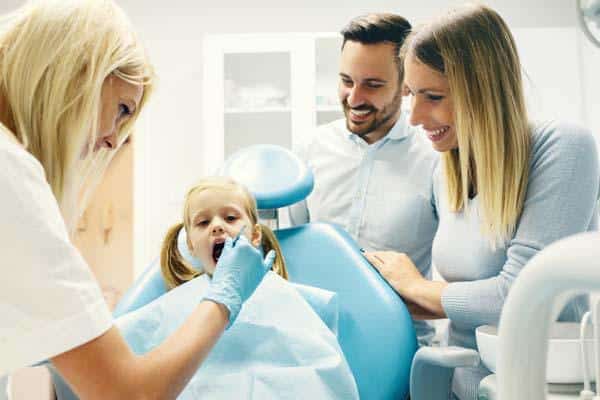At Skyline Smiles, our team specializes in pediatric dentistry under the experienced direction of board-certified pediatric dentist Dr. Harleen Grewal at the helm. As experts in the field, we understand all too well the many late nights spent with toothaches or dealing with chipped or knocked-out teeth.
To help guide you through your child’s dental development, we’ve pulled together a primer on the top five dental emergencies and the steps you should take.
1. A knocked-out baby tooth
When children gain their mobility, they’re off to the races, though a bit wobbly at first. If your child takes a tumble and loses a baby tooth, the good news is that the tooth was going to come out anyway. The bad news is that baby teeth play a crucial role in holding the space for their permanent tooth.
If your child loses a baby tooth before its time, rinse their mouth with water and come in and see us. If the tooth was close to coming out on its own, we’ll likely just ensure that there’s no collateral tissue damage. If your child’s permanent tooth is far from erupting, we may place a space saver in their mouth to allow room for that tooth.
2. Losing a permanent tooth
As your child grows, they become more adventurous and accidents happen. If your child knocks out one of their permanent teeth, your immediate steps are important. First rinse your child’s mouth out with water. Next, locate the tooth, rinse it with water, and try and stick it back into the socket (you can have your child bite down on some gauze or a tea bag to hold it in place).
If the tooth doesn’t readily go back into the socket, preserve it in some milk, saline water, or saliva.
Next, call us right away. Our goal is to try to reattach the tooth to prevent you from having to put a prosthetic tooth in your child’s mouth.
3. Cracked or chipped tooth
If your child cracks one of their teeth, rinse the area immediately, and apply a cold compress. Your next step should be to call us and make an appointment so that we can assess the damage. Cracked teeth are an invitation for infection-causing bacteria, not to mention the comfort and aesthetic issues. One of our solutions is to affix a pediatric crown, which preserves not only their tooth, but their ability to chew, smile, and talk with ease.
If your child merely chips a tooth, use your best judgment about whether to seek help. If it’s a minor chip, it can probably wait until your next visit. If it’s fairly significant, you might want to give us a call so that we can have a look.
4. Toothache
Children and toothaches often go hand-in-hand. Outside of teeth coming in, the biggest cause of toothaches is tooth decay. If your child has a toothache that isn’t related to tooth eruption, we encourage you to come see us so that we can check for decay. Early intervention is key when it comes to decay to preserve your child’s teeth.
5. Biting the lip, cheek, or tongue
If your child bites down hard on the soft tissues around their mouth, including their cheeks, lips, or tongue, gently rinse the area, and apply a cold compress. If the damage looks superficial, you may wait to see if the area begins to heal (these areas tend to heal quickly in children). If the damage looks moderate-to-severe and your child is in pain, please come see us. If there’s extensive bleeding, please call us immediately, or seek emergency help right away at your nearest ER or urgent care clinic
Ultimately, kids are no strangers to dental emergencies, but the good news is that there are solutions that set them up for a lifetime of great dental health. To learn more, contact our office in Santa Clarita, California.

